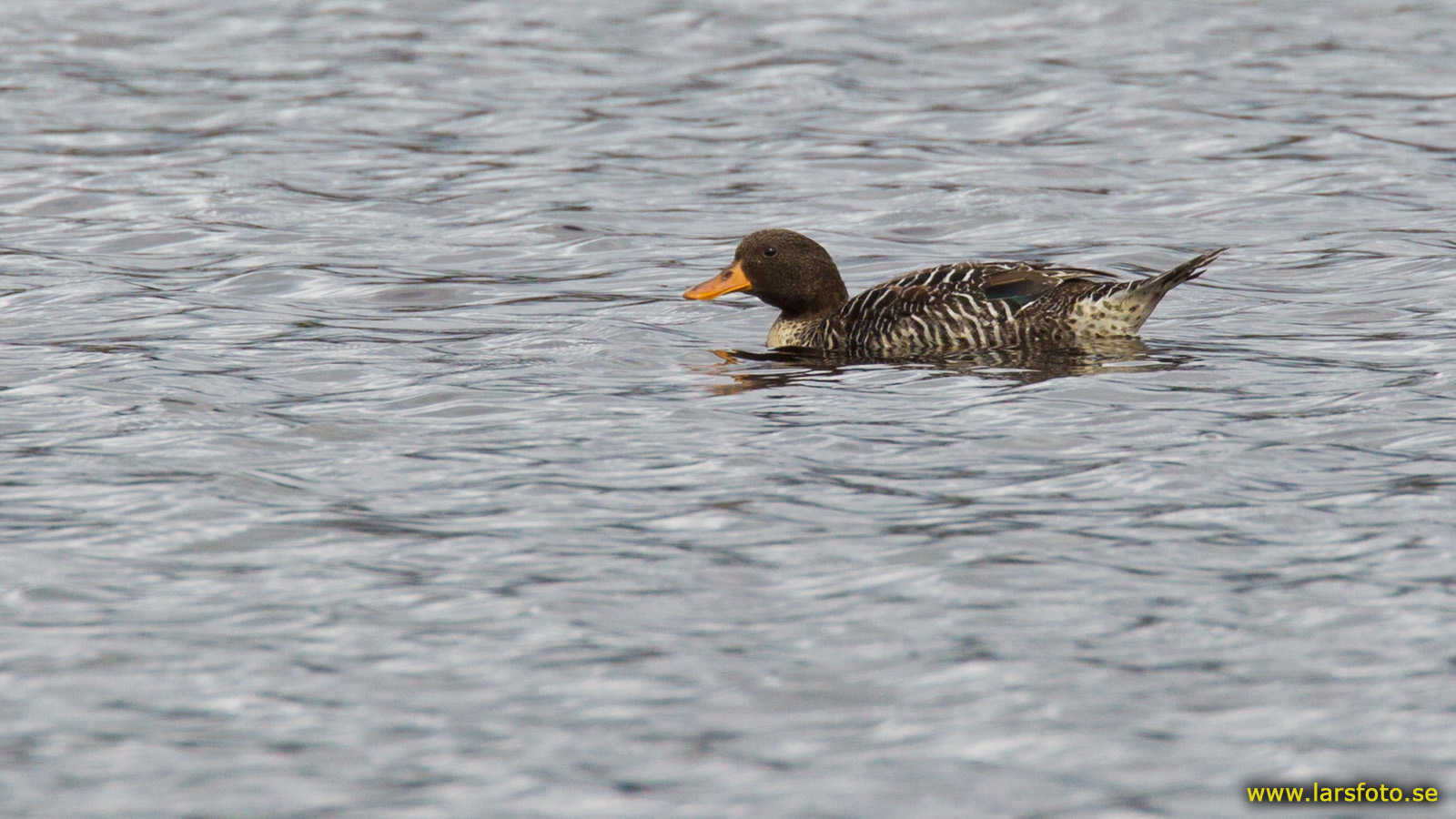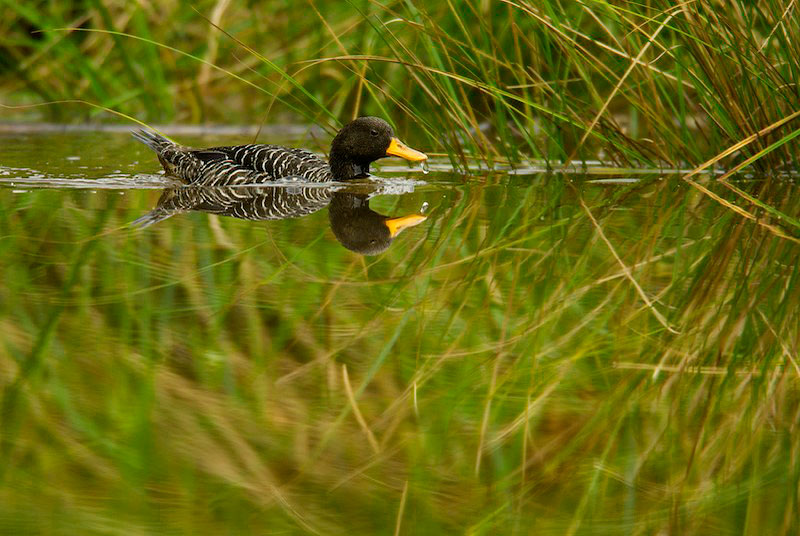
Anas waigiuensis
SUBFAMILY
Anatinae
TAXONOMY
Salvadorina waigiuensis Rothschild and Hartert, 1894, Waigeo.
Monotypic.
OTHER COMMON NAMES
English: Salvadori’s duck; French: Canard de Salvadori; German:
Salvadoriente; Spanish: Anade Papъa.
PHYSICAL CHARACTERISTICS
15.0–16.9 in (38–43 cm); 0.88–1.2 lb (400–550 g). Dark head,
barred wings, and stippled feathers.
DISTRIBUTION
Mountains of New Guinea.
HABITAT
Fast flowing mountain streams and brooks as well as slower
flowing small rivers and small lakes; from 1,640–11,800 ft
(500–3,600 m) elevation.
BEHAVIOR
Territorial year round.
FEEDING ECOLOGY AND DIET
Feeds mostly on aquatic invertebrates and possibly tadpoles
and small fish.
REPRODUCTIVE BIOLOGY
Perennially monogamous. Possibly produces two broods a year.
Lays 3–4 eggs; incubation longer than 28 days.
CONSERVATION STATUS
Not threatened. Locally common. May become threatened due
to increased hunting, river pollution, predation by introduced
mammals, and competition with introduced predatory fish.
SIGNIFICANCE TO HUMANS
Hunted for food.
Other popular Animals
Photo Gallery of - Salvadori’s teal




 Animalia Life
Animalia Life